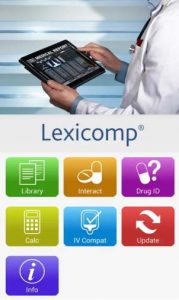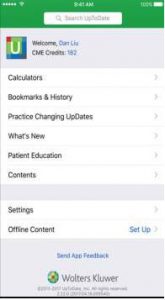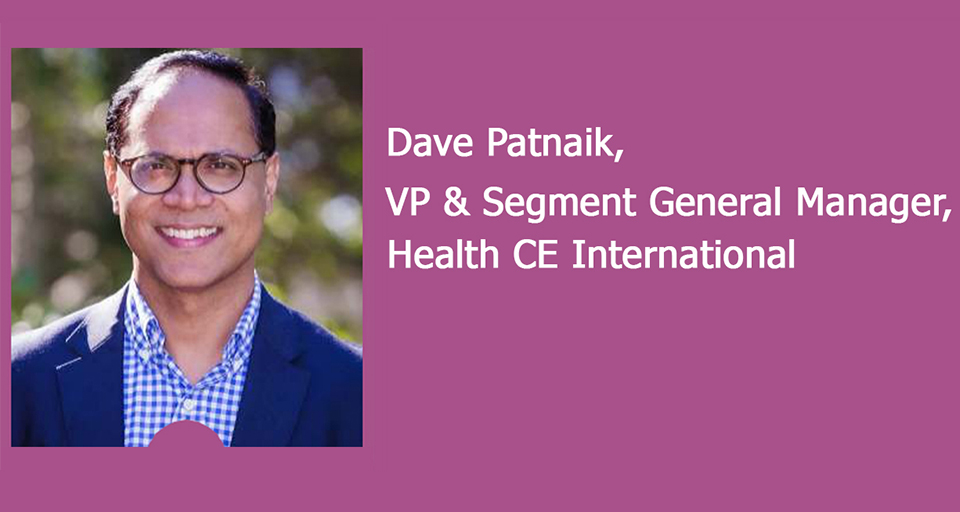“Undoubtedly it is variability in care. Healthcare leaders around the world tell us that this is one of the biggest challenges they face today. Variability drives inequality in health outcomes as well as health service inefficiency”
The term clinical effectiveness means the application of the best knowledge, derived from research, clinical experience and patient preference to achieve optimum processes and outcomes of care for patients. The process also includes a framework of informing, changing and monitoring practice.
Clinical effectiveness is about improving patient’s total experience of healthcare and is an essential part of improving and assuring quality. The aim of clinical effectiveness is to use evidence to improve effectiveness of clinical practice and service delivery.
Wolters Kluwer provides trusted clinical technology and evidence-based solutions that engage clinicians, patients, researchers and students. The primary goal is to help healthcare providers provide optimal care to their patients by improving quality, reducing cost and enhancing the patient experience.
Dave Patnaik, VP & Segment General Manager, Health CE International Wolters Kluwer explains to Ayesha Rashid of Mediworldme the importance of clinical effectiveness and why the company puts a lot of focus on it?
“We know that a focus on improving clinical effectiveness makes a difference to care quality, clinical outcomes and patient experience – over 100 independent studies on the impact of UpToDate support this.
Dave Patnaik,
VP & Segment General Manager, Health CE International
Electronic Patient Record
 Every day clinicians across the Middle East face decisive moments that impact the lives of their patients. In these situations we want patients to benefit from the latest evidence and best practice by putting knowledge at the clinician’s fingertips, whether on a laptop, mobile device or within the Electronic Patient Record (EPR).
Every day clinicians across the Middle East face decisive moments that impact the lives of their patients. In these situations we want patients to benefit from the latest evidence and best practice by putting knowledge at the clinician’s fingertips, whether on a laptop, mobile device or within the Electronic Patient Record (EPR).
“ We know that a focus on improving clinical effectiveness makes a difference to care quality, clinical outcomes and patient experience over 100 independent studies on the impact of UpToDate support this.
“We do this currently with four main products: UpToDate®, which provides decision support to more than 1.7 million users worldwide; Lexicomp® and Medi- Span® – drug reference and embedded drug data solutions, and Emmi® patient programs, a multimedia medical content product designed to engage patients in their care.
“We have customers across the Middle East, and our teams in UAE and KSA work directly with hospitals, clinics and medical schools or through channel partners to implement digital healthcare technologies that deliver deep impact for clinicians and patients”.
Monitoring patient safety
Monitoring patient safety during clinical trials is a critical component throughout the drug development life cycle. Pharmaceutical sponsors must work proactively and collaboratively with all stakeholders to ensure a systematic approach to safety monitoring. The regulatory landscape has evolved with increased requirements for risk management plans, risk evaluation and minimization strategies. As the healthcare industry transitions from passive to active safety surveillance activities, there will be greater demand for more comprehensive and innovative approaches that apply quantitative methods to accumulating data from all sources, ranging from the discovery and preclinical through clinical and post-approval stages.
‘Unwanted variation’ (or ‘variability’) in care describes the difference in decisions made by clinicians, perhaps because more than one equally good option exists for treating an illness. What we see as a result are patients with the same condition receiving different treatments. While one treatment option may be more costly than the other, the clinical outcomes may be the same – leading to more costly care for one patient. In another scenario, clinical guidelines may change but not be adopted immediately, leading to less effective care.
Equipping clinicians with the most current clinical information at the point of care allows healthcare providers to ensure patients receive the best quality care based on the latest evidence & recommendations from world-renowned experts.
“Undoubtedly it is variability in care. Healthcare leaders around the world tell us that this is one of the biggest challenges they face today. Variability drives inequality in health outcomes as well as health service inefficiency.
“Forward thinking organizations are reducing unwanted variability by aligning decisions and harmonizing care. This means empowering all caregivers and patients with consistent clinical and drug information from one trusted source across the continuum of care, and ensuring this information aligns with evidence-based medicine and best practices. That’s where we come in”.
Improving patient outcome
Clinicians in the Middle East and beyond rely on Wolters Kluwer’s UpToDate® clinical decision support resource to make the best diagnosis and treatment decisions for patients. It is the only resource associated with improved patient outcomes and hospital performance.
 Researchers at Harvard University found that use of UpToDate over a three-year period was associated with statistically significant, improved quality, lower lengths of stay and lower mortality rates. Use of UpToDate was also associated with 372,000 hospital days saved per year and 11,500 lives saved every 3 years.
Researchers at Harvard University found that use of UpToDate over a three-year period was associated with statistically significant, improved quality, lower lengths of stay and lower mortality rates. Use of UpToDate was also associated with 372,000 hospital days saved per year and 11,500 lives saved every 3 years.
“Many healthcare organizations in the Middle East choose our Lexicomp and Medi-Span drug solutions to provide clinicians with evidence based drug information such as drug warnings, interactions, and precautions. These solutions are proven to improve patient safety by reducing medication error. Embedding a drug solution such as Medi-Span into the clinical workflow can provide automatic screening and alerts, reducing the risk of error even further.
“Our Emmi patient engagement programs help patients to take an active role in their care. Healthcare organizations use Emmi interactive voice and video programs to engage patients in their health and optimize resources and the reach of care teams. As 80% of factors affecting health outcomes occur outside healthcare delivery, it’s important that we support patients when they are at home, as well as when they are in a hospital or clinic setting. Studies of Emmi show increased engagement and improved clinical outcomes when patients interact with an Emmi program”.
The content in Up To Date that is used to make diagnosis and treatment decisions is created by more than 6,700 world-renowned physician authors, editors, and reviewers. They use a rigorous editorial process to synthesize the most recent medical information into trusted, evidence-based recommendations to help clinicians diagnose and treat patients.
“ More than 150 pharmacists and clinicians independently produce and update the content in Lexicomp, which is then peer-reviewed by 260 external experts.
Providing reliable and actionable information that clinicians can trust is at the core of everything we do”.
Point of care solutions
The healthcare industry is in a transformative stage as it undergoes reform through initiatives that focus on improving patient outcomes, tying provider reimbursement to quality metrics (rather than traditional fee for services), adopting electronic patient records, and developing accountable care organizations. One of the major enablers of these changes is the proliferation of point-of-care (POC) technologies that offer the promise of improving outcomes and reducing costs through increased access to and use of diagnostic and monitoring solutions.
POC technologies have the potential to improve the management of various diseases and conditions, especially in resource-limited settings where healthcare infrastructure is weak and access to quality and timely medical care is a challenge. These tests offer rapid results, allowing for timely initiation of appropriate therapy and/or facilitation of linkages to care and referral. Most importantly, POC devices can be simple enough to be used at the primary care level and in remote settings with no laboratory infrastructure. These solutions can potentially empower patients to self-test in the privacy of their homes, especially for stigmatized diseases such as HIV and other sexually transmitted diseases.
“Point of care solutions put clinical information at the clinician’s fingertips exactly when and where they need it. This may be on a tablet on a ward round or in the patient record during a consultation for example. These solutions help clinicians to make better and faster decisions but also enable patients to be involved in their care by providing patient education information about their condition and treatment options.
“The next generation of clinical decision support solutions uses algorithms and AI to offer a guided, patient-specific approach to clinical decision making. Our new solution, UpToDate® Advanced™, combines core UpToDate content with interactive pathways to provide recommendations that are tailored to the individual patient. As well as supporting clinician decision making, UpToDate® Advanced™ is designed to tackle variability by providing pathways for the most common conditions and those with high levels of variability in care”.
Outlining healthcare clarity
With a wealth of patient-specific educational materials in a variety of formats – from printed information on a new prescription to videos explaining a surgical procedure and how to prepare for it – doctors have more opportunity than ever to engage patients in their care.
Studies show that improving patient education and engagement has a positive impact on clinical outcomes; decision-making and appointment attendance rates so the benefits to both patients and doctors are clear.
Dave believes that this is the kind of healthcare clarity can really make a difference.
Example Emmi study
We have found that patients who become more engaged in their care by watching programs on hypertension have better blood pressure control. Centura Health, a large healthcare network in the western US, sought to engage its hypertensive patient population to increase its rate of controlled blood pressure. To do so, Centura Health sent the Hypertension Emmi® program to 6,509 patients, with varying levels of blood pressure control, to help increase understanding of the condition and improve self-management. After six months, the impact of program viewership relative to blood pressure control was measured. We found that patients who viewed an Emmi program were more likely to have controlled blood pressure. Significant improvements were reported regardless of patients’ initial blood control status (controlled, unknown or uncontrolled).
“What we know about effective clinical decision making is that it is increasingly difficult for doctors to keep up with growing volumes of medical information and new evidence in order to make the best decisions. That’s why our editorial team does the time consuming work of continuously hand searching and reviewing more than 435 medical journals. This team works with world- renowned experts in each specialty to synthesize evidence and provide actionable recommendations that help doctors make effective decisions.
This is all about empowering clinicians and freeing up their time so they can focus on what matters most – their patients,” Dave concludes our interview.














